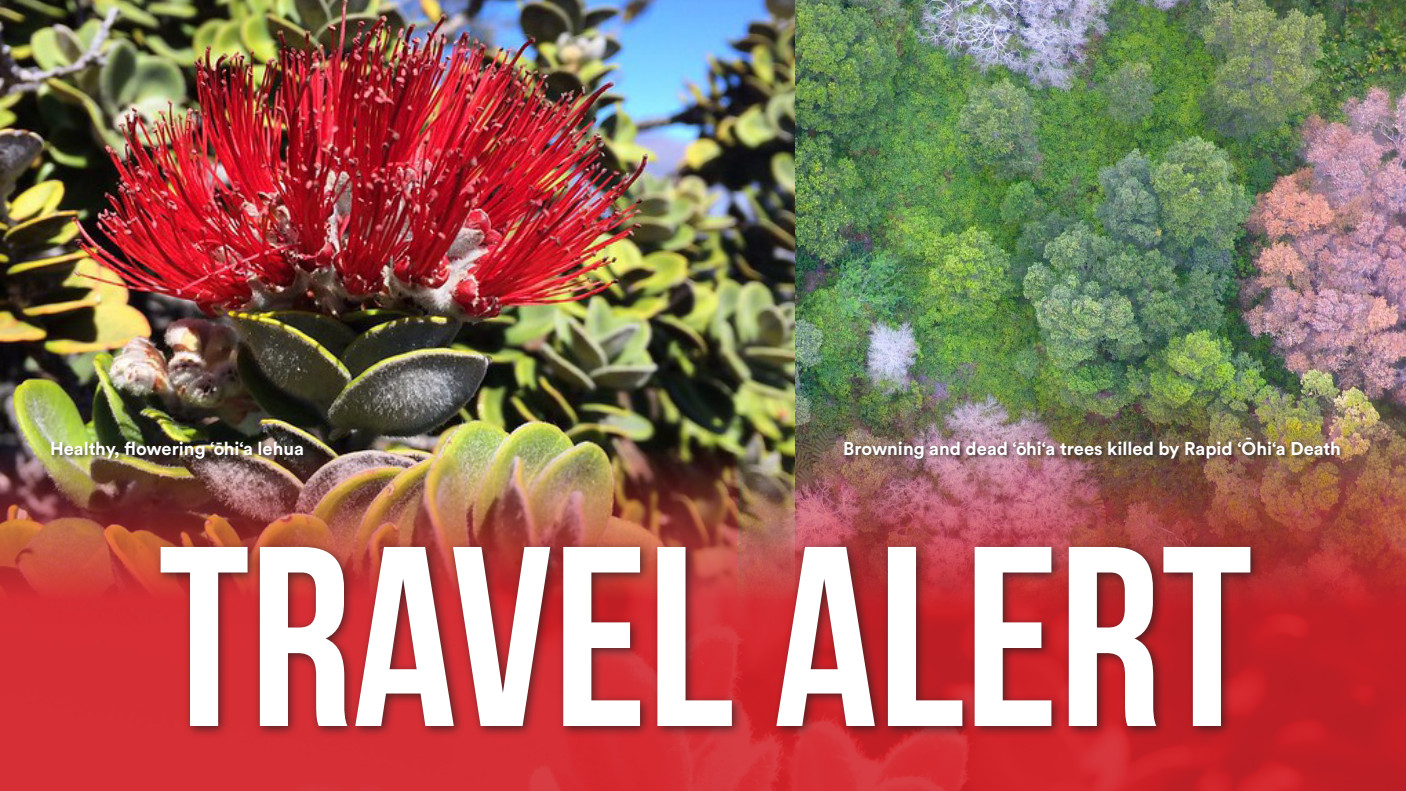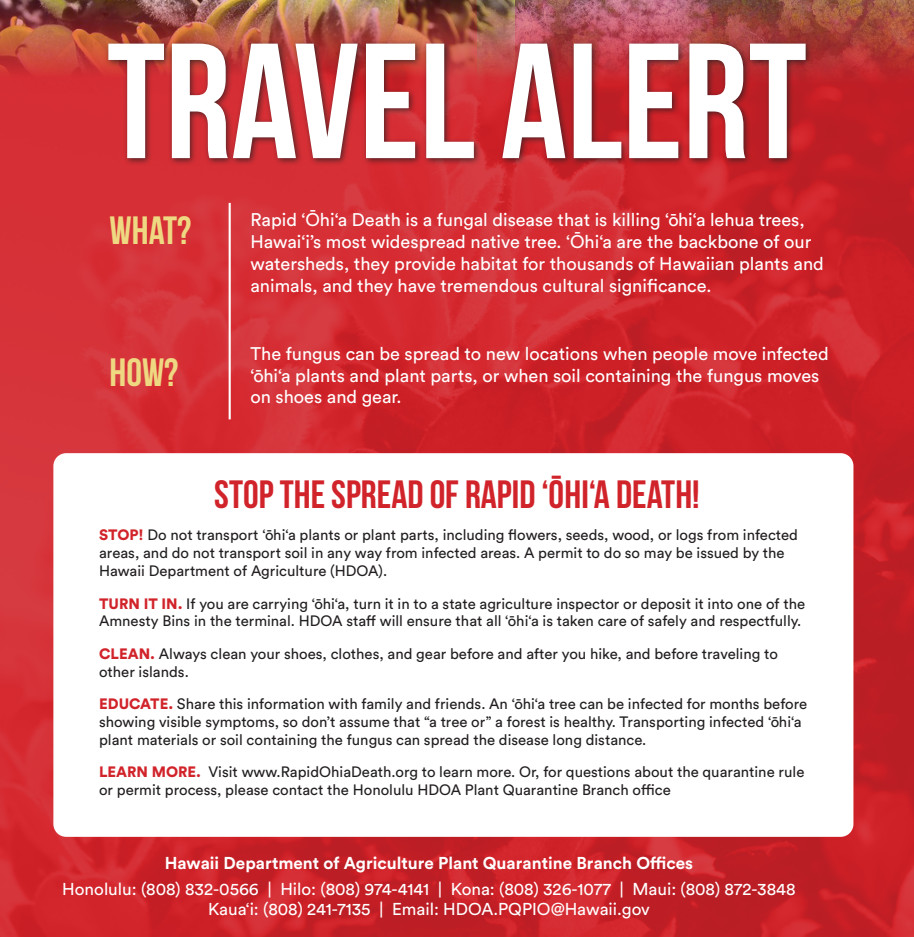(BIVN) – Travelers taking part in the Merrie Monarch Festival are being reminded by state officials that the movement of ‘Ōhi‘a from Hawaiʻi island is restricted, as the quarantine designed to prevent the spread of the fungal plant disease, rapid ʻōhiʻa death, remains in effect.
From a Hawaiʻi Department of Agriculture news release:
Travelers attending the Merrie Monarch Festival this week are being reminded that quarantine restrictions remain on the transport of ʻōhiʻa from Hawai`i Island due to the fungal plant disease, rapid ʻōhiʻa death (ROD), which is devastating to native forests. It is estimated that at least one million ʻōhiʻa trees have been killed by ROD just on Hawai‘i Island alone.
The quarantine restricts the movement of ʻōhiʻa plants and plant parts, including flowers, leaves, seeds, stems, twigs, cuttings, untreated wood, logs, mulch, greenwaste and frass (sawdust from boring insects) and any soil from Hawai`i Island. Transport of such items is only allowed with a permit issued by the Hawai`i Department of Agriculture Plant Quarantine Branch (HDOA-PQB). A travel alert flyer has been posted online
“We are glad that the Merrie Monarch Festival is back in full force and everyone can enjoy the week of festivities,” said Sharon Hurd, chairperson of the Hawai‘i Board of Agriculture. “However, it is important that travelers not take any part of the ʻōhiʻa off the island to prevent further spread of rapid ʻōhiʻa death.
“Agricultural inspectors will be stationed at the airports in Hilo and Kona to collect any ʻōhiʻa material which will be respectfully returned to the native forests on Hawai‘i Island,” Hurd added. “It takes all of us to protect Hawai‘i.”
The Hawaiʻi Board of Agriculture issued an emergency quarantine in August 2015 to stop the spread of the plant fungus from Hawaiʻi Island to other islands. A permanent quarantine rule was established in 2016. Any person who violates the quarantine rule may be charged with a misdemeanor and fined not less than $100 with a maximum fine of $10,000. For a second offense committed within five years of a prior conviction under this rule, the person or organization shall be fined not less than $500 and not more than $25,000.
The Merrie Monarch Festival draws dozens of hula hālau and hundreds of spectators to Hawai‘i Island. It is important to note that the very act of harvesting ʻōhiʻa may spread the disease, as spores may be carried in soil and by harvesting tools, vehicles, shoes and clothing to uninfected areas. Multi-agency ROD working groups have been meeting with Native Hawaiian groups, the Merrie Monarch organization and other community groups to provide advice and guidance on the handling of ʻōhiʻa material.
ROD was first noticed in 2010 in Puna. In 2014, the fungus was initially identified as Ceratocystis fimbriata by researchers at the U.S. Department of Agriculture’s Daniel K. Inouye Agricultural Research Service. Recent research has reclassified Ceratocystis fimbriata into two distinct species that are new to science, Ceratocystis lukuohia and Ceratocystis huliohia.
The disease was detected on Kauaʻi in 2018 and on O‘ahu in 2019. Also in 2019, one ʻōhiʻa tree on Maui was infected and destroyed and ROD has not been detected on the island since. It is not known how the disease entered the state or where it came from.



by Big Island Video News1:39 pm
on at
STORY SUMMARY
HILO, Hawaiʻi - The State of Hawai‘i has issued a reminder that restrictions remain on the transport of ʻōhiʻa from Hawaiʻi island due to the fungal plant disease known as rapid ʻōhiʻa death.